Have you ever looked at your cat and wondered, “What’s really going on behind those mysterious eyes?” Most people think cats are stubborn, aloof, or simply uninterested in learning tricks like dogs. But here’s the shocking truth: cats are secret geniuses hiding in fur coats! It turns out, our feline friends are capable of so much more than lounging in sunbeams or chasing laser pointers. Get ready to be amazed, amused, and maybe even a little inspired as we dive into 20 surprising things cats can actually learn to do. Some of these will leave you grinning; others might just make you see your whiskered companion in a whole new light.
Opening Doors Like a Pro

Imagine walking into your kitchen and finding your cat has already made herself at home on the counter, having opened the door herself. Yes, cats can learn to open doors—especially those with handles instead of knobs. With a few attempts and the right motivation (like the promise of treats or a warm room), many cats figure out how to jump, paw, and pull or push just right. It’s a mix of curiosity and cleverness. Some owners have even reported their cats learning to open sliding doors or cupboards, revealing a knack for problem-solving that rivals any escape artist. If you’ve ever found yourself wondering why your cat is suddenly appearing in rooms you swore were off-limits, now you know.
Using the Toilet
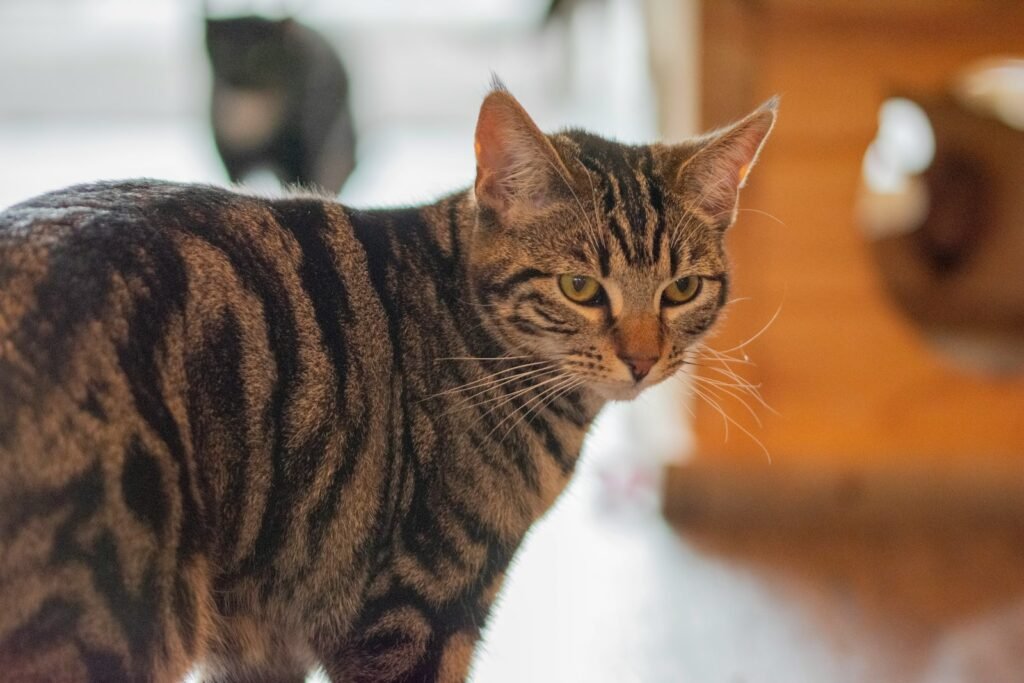
Believe it or not, teaching a cat to use a human toilet isn’t just a Hollywood movie gag. With patience and a step-by-step approach, cats can learn to balance on the seat and do their business right where you do. Specially designed training seats help guide the process, gradually removing the need for a litter box altogether. The benefits? Less mess, fewer odors, and no more scooping. Some cats even learn to flush! It takes persistence, but many cat parents have found it to be a rewarding—if slightly surreal—process.
Playing Fetch

Dog people love to brag about their pets’ fetching skills, but cats can be just as talented. Many felines, especially those with playful personalities, can learn to chase and retrieve toys. Soft balls, crumpled paper, or even favorite stuffed animals become the tools of this unexpected game. The secret is repetition and positive reinforcement—usually in the form of treats or excited praise. Before you know it, your cat might be sprinting across the living room to bring back her favorite mouse toy, tail high and proud.
Learning to Walk on a Leash

The idea of a cat on a leash might sound hilarious, but it’s a growing trend among adventurous cat owners. With the right harness and lots of gentle encouragement, many cats can learn to enjoy walks outdoors. It’s a slow process—cats need time to get comfortable with the feeling of the harness and the unpredictability of the outside world. But for some felines, the reward is worth it: new smells, sights, and the thrill of exploration. Leash training can open up a whole new world for indoor cats while keeping them safe.
Giving a High-Five

Who says high-fives are just for humans? Cats can learn this cheerful gesture with a little guidance. The process is surprisingly simple: hold out your hand, encourage your cat to touch it with her paw, and reward her with a treat. Over time, she’ll associate the motion with positive reinforcement. It’s not only adorable—it’s a fun way to bond. Some cats even take it a step further, offering high-fives on command or as part of a trick routine.
Turning On and Off Lights
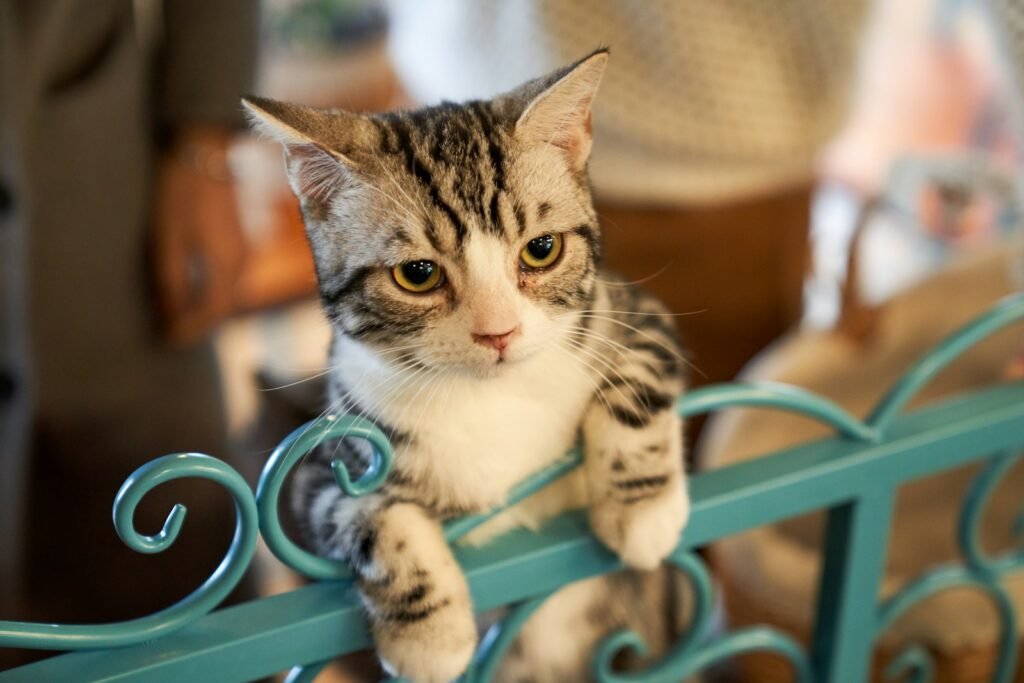
It might sound like something out of a comedy sketch, but some cats have figured out how to flip light switches. With their nimble paws and boundless curiosity, determined felines can jump or reach up to toggle a switch—sometimes by accident, but often on purpose if they see it gets your attention. While this skill isn’t always encouraged (imagine a midnight disco in your hallway), it’s a testament to just how observant and quick-learning cats can be when they see a pattern or cause-and-effect relationship.
Opening Drawers and Cabinets

If you’ve ever found your cat rummaging through your socks or kitchen utensils, you’re not alone. Many cats learn to open drawers and cabinets, especially if they know there’s something interesting inside. They might use their paws to pry doors open or even use their teeth to pull on handles. This behavior is part curiosity, part ingenuity. Some cats become so adept that owners have to install childproof locks to keep them out of mischief. It’s a clever reminder that cats are always paying attention—and always looking for a way to satisfy their curiosity.
Learning Their Own Name

Cats have a reputation for ignoring us when we call, but research shows they can learn to recognize their own names. They may not come running every time, but they know when you’re calling for them versus just chatting. Repeated use of their name, especially in positive contexts like feeding or playtime, helps them make the connection. Some cats even respond with a chirp, meow, or head turn when they hear their name. It just goes to show that while they may play hard to get, they’re always listening.
Jumping Through Hoops

It’s not just a circus trick—plenty of cats can learn to jump through hoops. Using treats and a playful attitude, you can encourage your cat to leap through a held ring or even over obstacles. Start low and slow, allowing your cat to build confidence. For high-energy breeds or kittens, this can become a favorite game. It’s entertaining, provides great exercise, and is a wonderful way to keep your cat mentally stimulated.
Pressing Buttons for Food

Some owners have taught their cats to press a button when they want food or treats. This clever trick involves associating the button press with a reward, much like training a dog to ring a bell. Over time, cats learn that their action leads to a tasty payoff. Some take it a step further, using different buttons for different requests—showing a surprising level of understanding and communication. It’s a fun way to give your cat more control over her environment—and a great party trick, too.
Solving Food Puzzles

Cats love a challenge, and food puzzles are the perfect way to put their brains to work. These toys require them to figure out how to release treats by sliding, spinning, or pawing at various mechanisms. Not only does this tap into their natural hunting instincts, but it also helps prevent boredom and overeating. Some cats become so skilled that they solve complex puzzles in minutes, proving that mental stimulation is just as important as physical play.
Using a Scratching Post on Cue
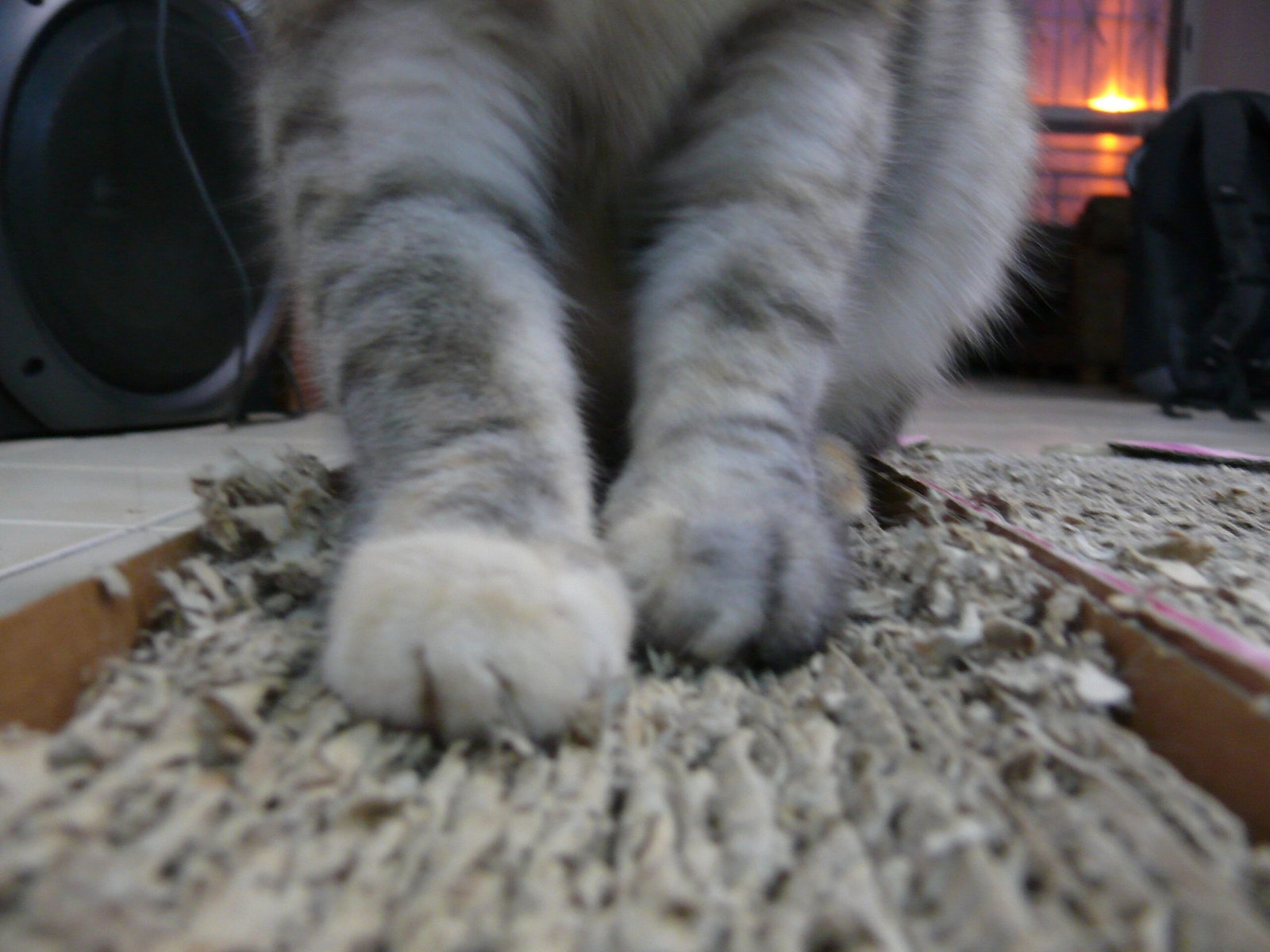
It’s every cat owner’s dream: a cat who scratches the post, not the couch. With some training, cats can learn to use their scratching post on command. By rewarding your cat every time she uses the post and redirecting her from forbidden furniture, she’ll soon understand where it’s okay to sharpen her claws. Some cats even learn to run to the post when they see you coming, eager for praise or a treat. It’s a small victory that can save your furniture—and your sanity.
Coming When Called

It’s a common belief that cats never come when called, but that’s not entirely true. Many cats can learn to come when you call their name or shake a treat bag. The key is consistency and positive reinforcement. Over time, your cat will associate the sound of her name or a particular noise with something good. Some cats become so reliable that they’ll dash across the house to greet you at the door or join you in another room just because you called.
Standing on Two Legs

Standing upright isn’t just for meerkats and prairie dogs—cats can do it, too! With encouragement and the promise of a treat, many cats will rise onto their hind legs, sometimes even holding the pose for several seconds. This trick is often taught by holding a treat just out of reach and rewarding the cat for stretching up. It’s both cute and impressive, and for some cats, standing on two legs becomes a favorite way to beg for snacks or attention.
Giving a Paw or Shaking Hands
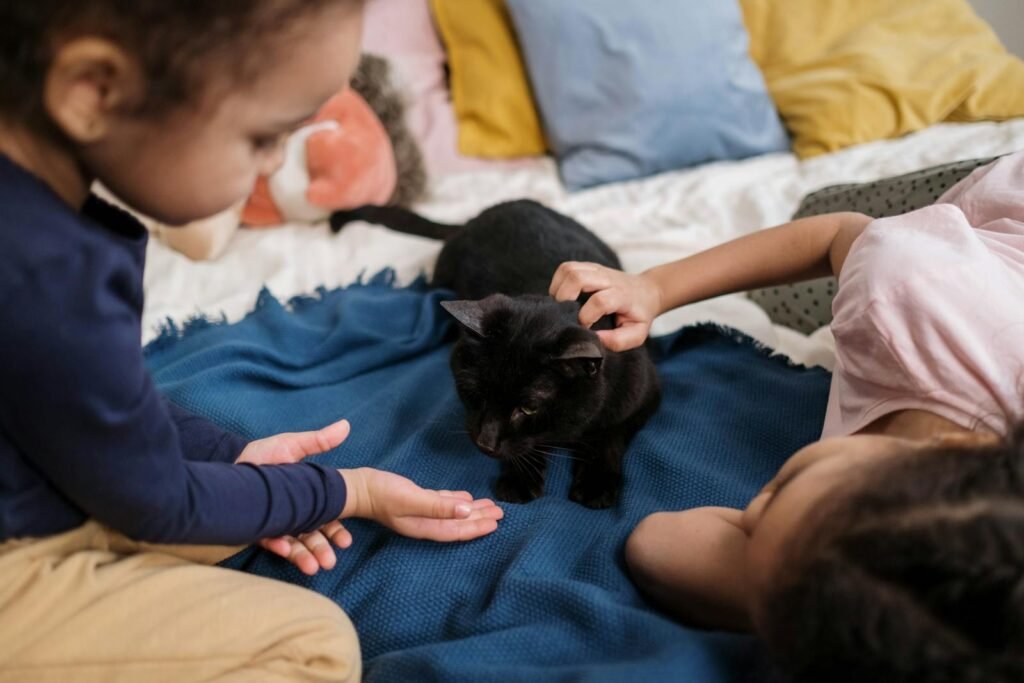
Shaking hands isn’t just for polite dogs—cats can learn this charming trick, too. By gently tapping your cat’s paw and rewarding her for offering it, you can teach her to place her paw in your hand on command. Some cats catch on quickly, especially if they’re naturally curious or food-motivated. It’s a sweet party trick and a unique way to strengthen your bond. Plus, it makes nail trimming a little less daunting if your cat is used to offering her paw.
Ringing a Bell

Teaching a cat to ring a bell may sound like something from a cartoon, but it’s entirely possible. With a small desk bell and some treats, you can encourage your cat to tap the bell with her paw for a reward. Some cats pick up the skill quickly, and soon you’ll have a furry little butler announcing her requests. This trick is a fantastic way to provide mental stimulation and can even help with communication—like letting you know when it’s dinner time.
Learning Basic Commands (Sit, Stay, Down)

While dogs are known for their obedience, cats are more than capable of learning basic commands like “sit,” “stay,” and “down.” The process is similar: use a treat to lure your cat into position, say the command, and reward her for compliance. Consistency is key, as is keeping training sessions short and positive. Some cats become surprisingly adept, responding to commands with the same enthusiasm as a well-trained dog. It’s a testament to their intelligence—and their willingness to work for a tasty snack.
Unzipping Bags and Backpacks

If you’ve ever found your lunch mysteriously missing or your bag slightly open, blame the cat. Some felines have learned to unzip bags and backpacks—often to get to treats, toys, or just out of sheer curiosity. They use their teeth or claws to grip the zipper and pull. While it’s not always the most convenient trick, it’s a hilarious reminder of just how resourceful cats can be. Owners often have to outsmart their pets by hiding zippers or keeping tempting items out of reach.
Turning On Faucets
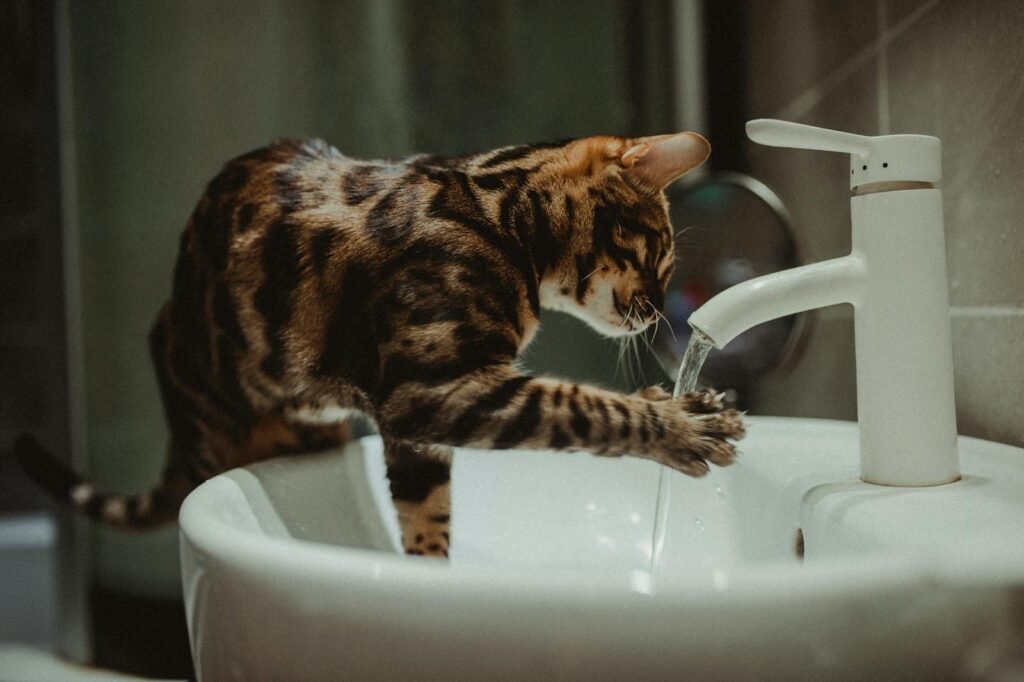
Many cats are mesmerized by running water, and some have learned to turn on faucets all by themselves. Whether it’s twisting a handle or pawing at a lever, determined cats find creative ways to get the water flowing. For some, it’s about getting a fresh drink; for others, it’s just fun to watch the water move. This trick can lead to some wet surprises, but it’s a clear sign of your cat’s cleverness and love of novelty.
Recognizing and Responding to Emotions

Cats are often described as mysterious, but they can be surprisingly in tune with human emotions. Some cats learn to recognize when their owner is sad, anxious, or happy, responding with cuddles, purring, or playful antics. This isn’t just coincidence—studies suggest cats pick up on vocal tones, body language, and even facial expressions. Many owners report their cats becoming extra affectionate during tough times, proving that the feline-human bond is deeper than we often realize.
Balancing Objects on Their Heads

While it might seem like a silly party trick, some cats can learn to balance lightweight objects—like toys or treats—on their heads. With patience and gentle encouragement, cats can sit still long enough to keep an object balanced, often for a reward. This skill requires trust, focus, and a strong relationship between cat and owner. It’s a fun way to challenge your cat’s patience and self-control, and the resulting photos are always good for a laugh.

Linnea is a born and bred Swede but spends as much time as possible in Cape Town, South Africa. This is mainly due to Cape Town’s extraordinary scenery, wildlife, and atmosphere (in other words, because Cape Town is heaven on earth.) That being said, Sweden’s majestic forests forever hold a special place in her heart. Linnea spends as much time as she can close to the ocean collecting sea shells or in the park admiring puppies.






